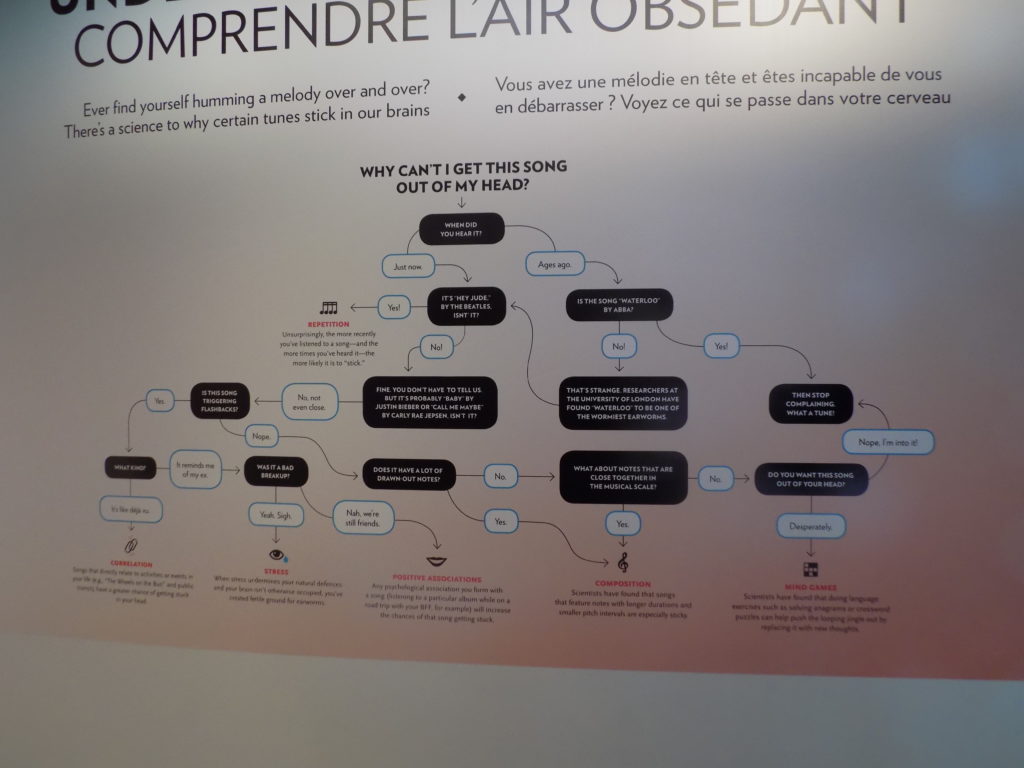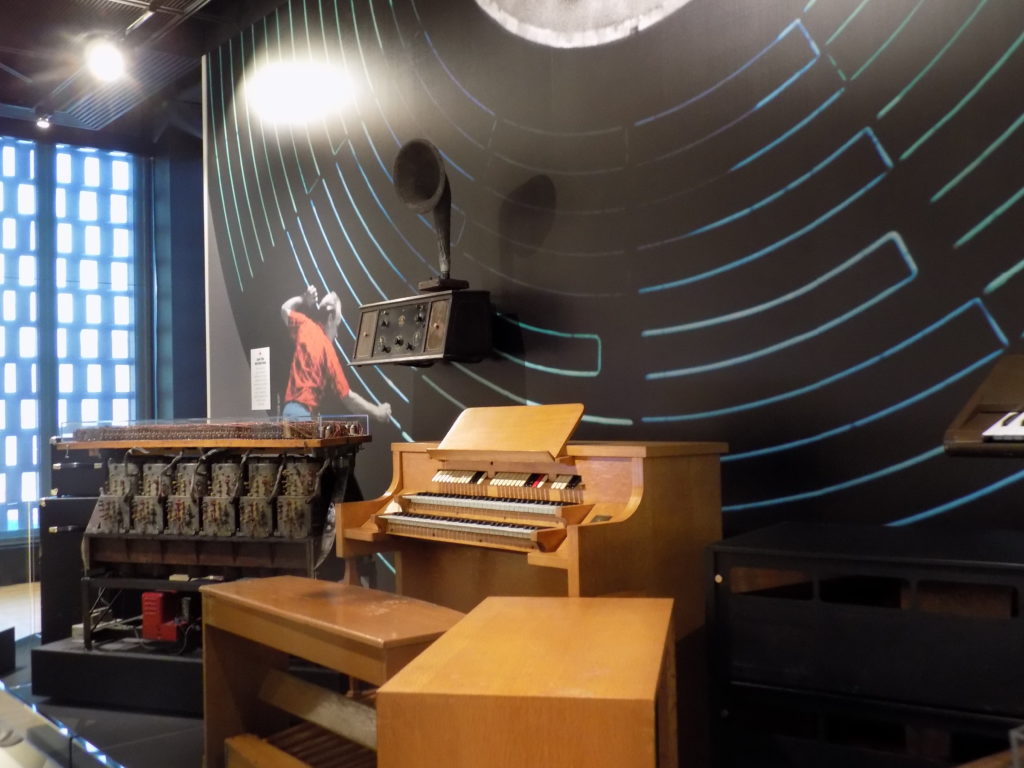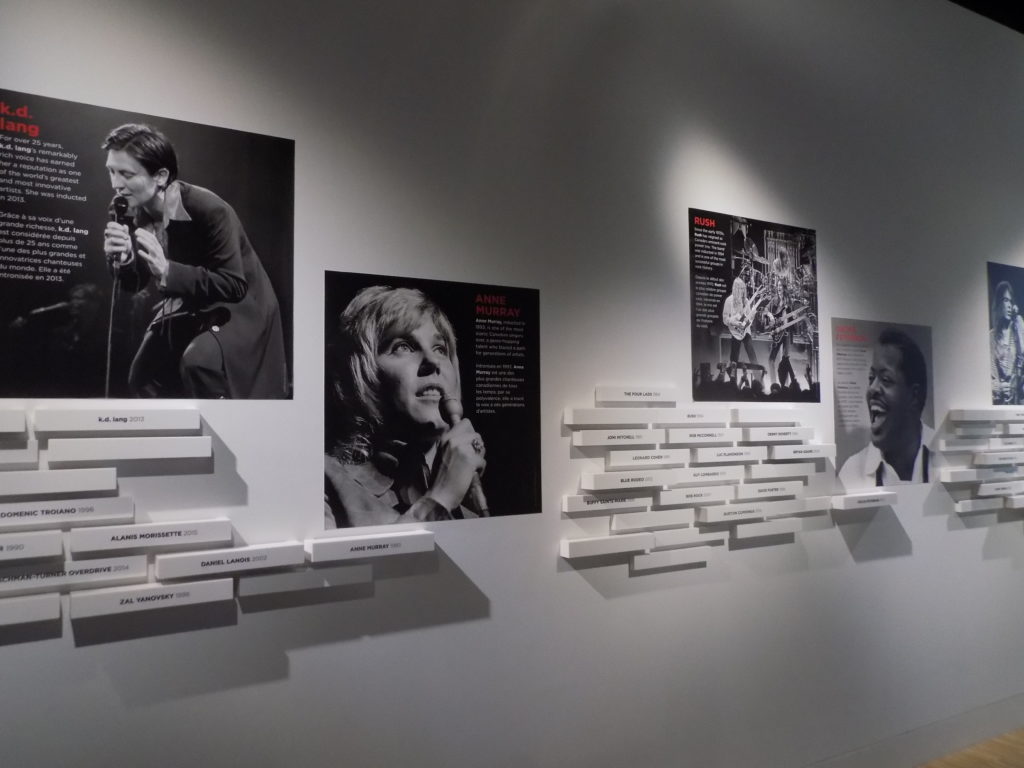Studio Bell.
Studio Bell, home of the National Music Centre (NMC), opened on 1 July 2016 so had I come to Calgary a mere 15 months (and a few days) before I did, I wouldn’t have been able to visit a place I’d consider a must see for anyone who comes to this city. (In deference to my hosts, I will use the preferred Canadian spelling of centre rather than the American center.) The visually striking 160,000 square foot facility is “dedicated to celebrating music in Canada in all of its forms.” While I have a few exterior and interior photos of my own I thought this one from EverydayTourist.ca [By Mack Male from Edmonton, AB, Canada – Calgary East Village, CC BY-SA 2.0] looking south from an elevated position captured more of the drama of the building that architect Brad Cloepfil designed inside and out to evoke not only musical instruments – particularly organ pipes, guitars and brass – but also the Rocky Mountains, hoodoos, and crevasses that define the landscape of western Canada.
The brick building on the right side in front of the street bridge is the painstakingly restored King Edward Hotel – that the locals fondly call the King Eddy. Built between 1905 and 1910, the original King Eddy housed a bar and blues club that, according to the museum tour guide, was also the first integrated club in Calgary. Over the decades, both the neighborhood, called the East Village, and the hotel became run down and the hotel was condemned in 2004.
Wanting to preserve a piece of Calgary’s musical history, the building was acquired to be a part of the NMC. Mary Kapusta, the Centre’s marketing and public relations manager, told the CBC, “The Eddy was in pretty rough shape so to actually restore it and rebuild it, we had to bring it down brick by brick, and we’re following Parks Canada heritage standards.” The NMC made laser scans of the building numbering every brick and replacing them within a metre of their original position. A metre for every brick, that is, except for those in the green sign. These were placed precisely in their original position.
The public space on the east side of the building has five levels with either open space, concert space, or exhibition space within each exhibition area called a stage. You enter into what the NMC calls Canada Music Square, an open and inviting space where the piano on your right, as you’ll see on the video in my photos folder linked below, provides an initial opportunity to respond to the centre’s invitation to interactivity.
Each level is thematically centered and, whether your interest is in the science of music,
its social impact, the study and observation of vintage musical instruments,
the chance to perform on your own, or if you simply want to stroll through the Halls of Fame,
you’ll find something that will engage your mind, your eyes and, most importantly, your ears. I spent another hour or two wandering around after the completion of the guided tour. Here are the rest of my pictures and videos.
Stampeding through Calgary.
Okay, so one person wandering through one museum and the Town Centre doesn’t qualify as a stampede but I had to find some way to reference the recurring event for which Calgary is most famous. (Globally, the city might be more famous for hosting the 1988 Winter Olympics but that doesn’t qualify as recurring. Calgary, by the way, is the eighth Winter Olympics host city I’ve visited and sixth since 2015.)
Since I’d traded a day in Glacier NP for a day in Calgary, it seemed reasonable to want to do more than simply loll about the hotel room and, given that it was Sunday, the town centre seemed like the optimal choice. Near the end of my visit to the Music Centre, I picked up the town centre map I’d left with a young woman at the museum’s admission desk. I’d told her of my ambition to wander the city to look at some of Calgary’s public art and had shared with her a list of the works I specifically hoped to see. (I don’t recall where or even when I’d read about Calgary’s public art program but I was prepared to experience it.) In that Canadian way of being helpful, she offered to mark the locations of that art. In that Canadian way of being helpful, by the time I ended my visit and stopped to retrieve the map, she’d not only marked the art on my list but added perhaps half a dozen of her own favorite works.
In 2004, the city of Calgary adopted a substantial Public Art Policy with five main goals:
- To create a visually rich urban environment.
- To attract creative businesses and workers.
- To provide art opportunities that are freely accessible to all.
- To contribute to its diverse cultural character.
- To foster the growth of a culturally informed public.
To that end, the program has seen the installation of more than 50 original works of art in every ward of the city. Additionally, the city has painted hundreds of utility boxes to give each one and its immediate neighborhood a unique quality.
Unlike the process in Missoula, where the city council must vote on each individual project, Calgary’s process is funded by dedicating a portion of City of Calgary capital projects to public art. Projects with budgets over $1 million use one percent of the first $50 million of the total eligible capital project costs, and 0.5% of the portion over $50 million – up to a maximum of $4 million.
The public art proposal for any project is reviewed by a selection panel with seven voting members – three from the community, three arts professionals, and one city employee. A new panel is formed for each project. So, as you can imagine, there’s lots of art to see. Fortunately for me, much of it is concentrated in the town centre and East Village areas and within easy walking distance of the NMC. (I should note that some of the artwork I saw predates the official Public Art Policy.) I hope you’re ready to accompany me and we’ll begin walking in the next entry.



